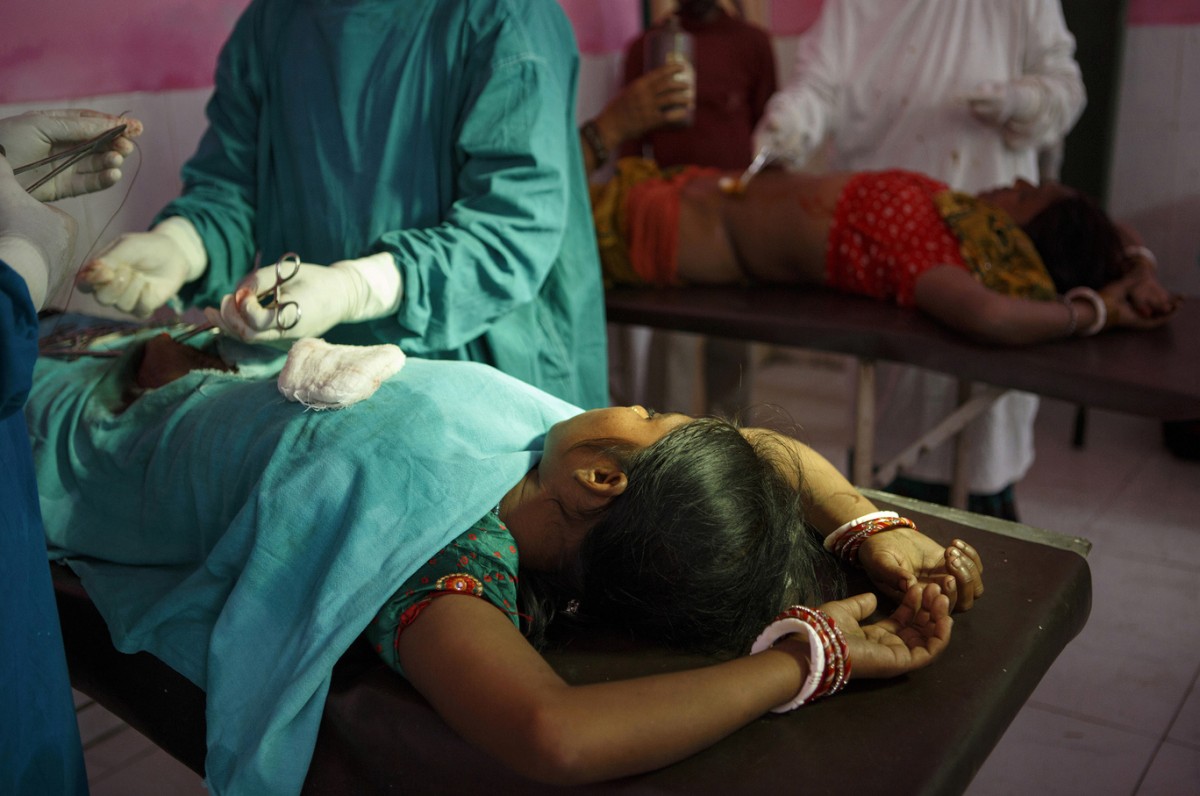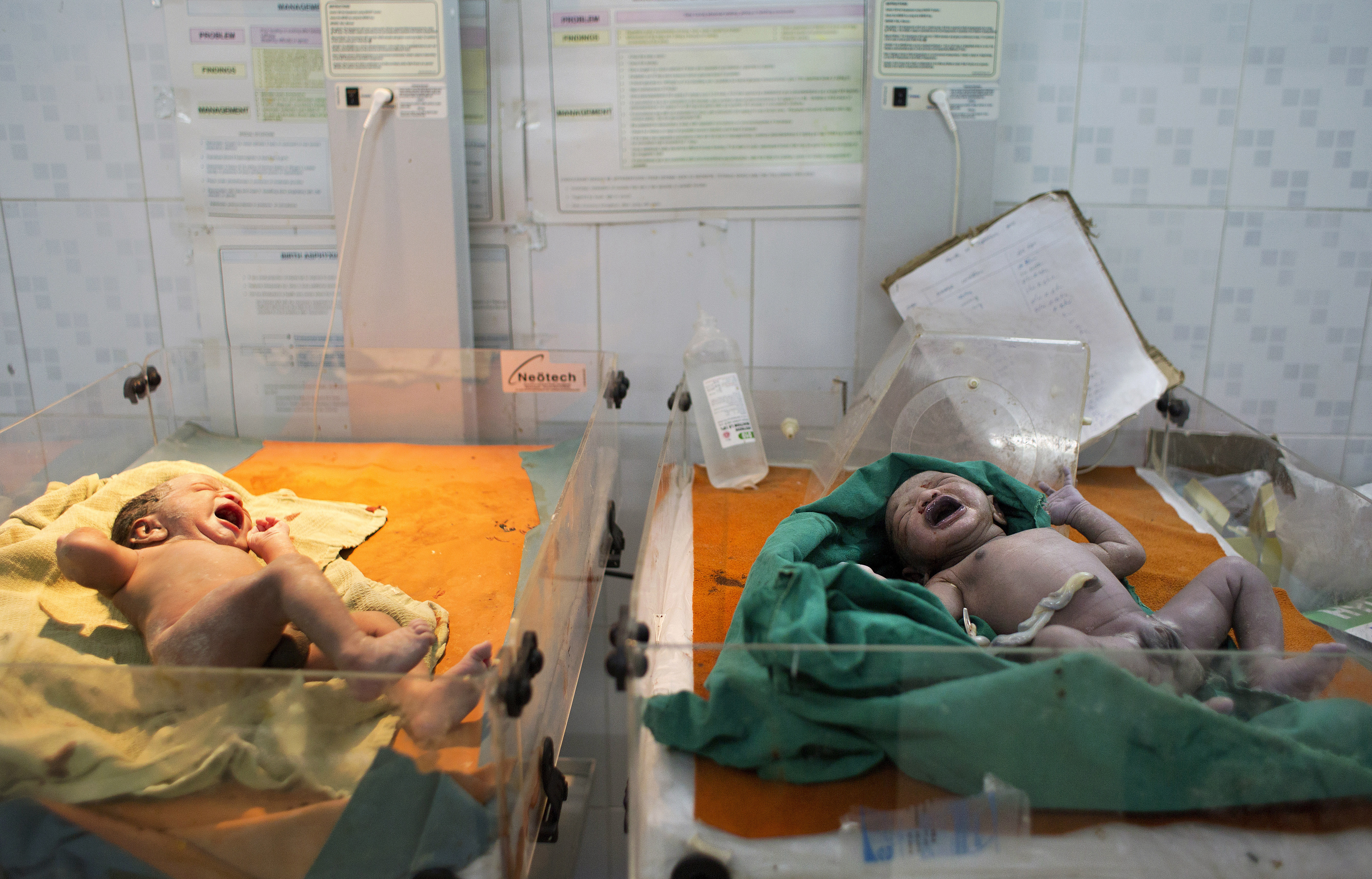
Pulitzer Center grantee Sarah Weiser placed third in this year's National Press Photographers Association's Best of Photojournalism Competition, Contemporary Issues Single Category.
Weiser took her photograph as part of her Pulitzer Center-supported project to India, "India: Grappling with the Legacy of 'The Population Bomb.'" The image of women undergoing sterilization was first published in May 2015, in Retro Report distributed by The New York Times.
More than 45 years after "The Population Bomb," a 1968 book by Paul Ehrlich, opened with a vivid description of the teeming streets of New Delhi, Weiser examined the impact of that theory in the U.S., and traveled to India, where, in the 1970s, the government embarked on a strict sterilization campaign. Sterilization campaigns—highlighted recently in stories about the deaths of women after a campaign in Chhattisgarh—are held regularly throughout India. In the northern state of Bihar, Weiser explored how incentives funneled toward health-care workers and patients may subvert the maternal healthcare system and encourage the sterilization of women who often have little if any other contraceptive options.
The caption for her winning photo reads: "Women undergo sterilization operations at the Cheria Bariarpur Primary Health Centre in Bihar in December 2014. A few dozen women were sterilized there that day. Many health care workers point out that sterilization is a one-time procedure that requires little follow-up care, and for rural women without regular access to health services, and less autonomy in their decision making, it can often be the best tool they have to control their own fertility. But particularly in rural regions, it is sometimes the only method women know, or that is made available to them. According to the most recent National Family Health Survey (2005-2006), 77 percent of sterilized women in India had never used any other method of birth control before sterilization. And the demand for birth control is there, doctors and health activists say - the level of unwanted fertility is high."
Weiser is a reporter and documentary photographer with Retro Report, a video news organization that seeks to tell the stories of today through the lens of the recent past that shaped them.





